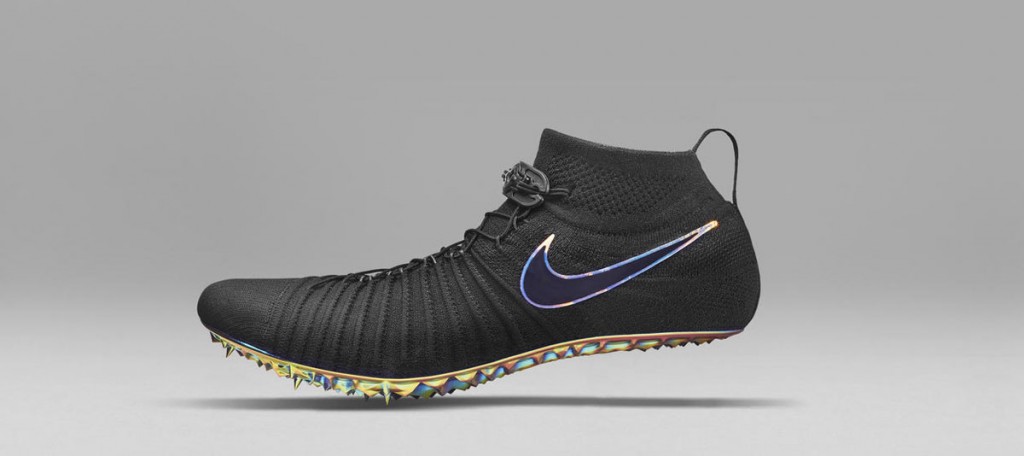3D printed shoes may be off and running this year, as numerous big brands have initiated programs to begin trials on 3D printed footwear. And, though Nike has some 3D printed shoes of its own, the company has long been using the technology for prototyping their products. The latest, and possibly the most mesmerizing, are the Nike Zoom Superfly Flyknit running shoes, designed in collaboration with gold-medal-winning American sprinter Allyson Felix.
Felix worked with Nike’s Sports Research Lab (NSRL) to create a new spike for her shoes that would enhance her performance in those impressive 200- and 400-meter sprints. In order to create the perfect spikes for the upcoming Olympic games in Rio de Janeiro, the team optimized the spike in terms of strength, fit, and flex so that they would complement their wearer perfectly. 3D printed in SLS, prototypes for the spike’s plate were engineered to determine the ratio of flexibility to bounce. This, in turn, reduced the amount of time between each iteration to a matter of days, speeding up the design process overall.
Felix said of the experience, “One of the things that I love about the process is that I’m not an expert in this, but I have all this science behind me. This is what [Nike] does and this is what they’re passionate about. I can have confidence that they’re going to give me the best equipment.” Tony Bignell, VP of Footwear Innovation at Nike, adds, “Our role in the Innovation Kitchen is to invent the future of performance innovation for athletes. We do that with a mission to make athletes better. In this work with Allyson, the product that has been created is making her measurably better. We’re seeing faster times in practice, more efficiency through and exiting the curb as well as unprecedented feedback from Allyson. We cannot wait to see how she performs in the spike throughout the coming months.”
The entire process saw the Olympic athlete meet with the Nike team over a dozen times, with 30 versions of the spike’s plate made and the upper changed over 70 times before the design was perfected. The result was a spike customized to Felix’s feet. The plate was reduced in volume and weight and, more importantly, the spike was extended to three-quarter height. Previously never implemented in a sprint spike, this allows for more of the foot to control the fluidity of motion while running. Additionally, the fit of the shoe itself was tailored to Felix’s feet, with a last designed for her 9.5, AA-width feet. Perfect for taking home even more gold medals at the 2016 Summer Olympics.




